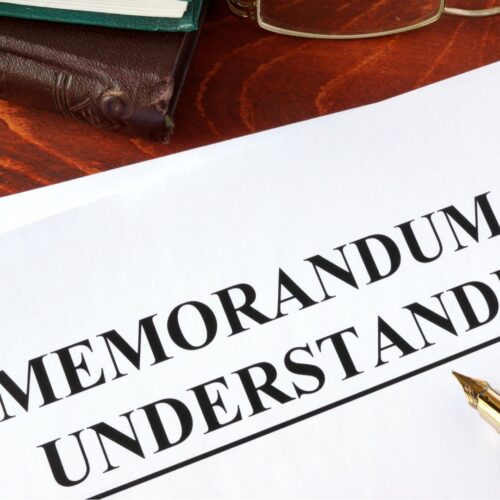
National Events Emphasize Need for Partnership, Collaboration to Address Behavioral Health
Researchers estimate that nearly 16 percent of people admitted to prison[1] and 17 percent of people admitted to jail have serious mental disorders, and these rates are three times higher for men and five times higher for women than in the general population.[2] Nearly 70 percent of adults in jails have a substance use disorder,[3] and more than 70 percent who have a serious mental disorder also have co-occurring substance use disorders.[4]
Policymakers, experts, practitioners, and administrators in both fields have recognized that these individuals have complex needs that cannot be adequately resolved by one system alone, and have also recognized the need for partnership and collaboration between the two systems.
To that end, in May, the Council of State Governments Justice Center (CSG Justice Center) delivered trainings at two conferences in the behavioral health field—the American Psychiatric Association’s (APA) Annual Meeting in New York City, and the National Council for Behavioral Health’s (NCBH) Annual Conference in National Harbor, MD. Both events drew significant numbers of behavioral health treatment providers and administrators—more than 14,000 at the APA Annual Meeting and more than 4,000 at the NCBH Meeting. The events provided opportunities for this group to collaborate with criminal justice professionals, and to share strategies to help improve the outcomes for their shared population—people involved with the criminal justice system with behavioral health needs.
 For the APA’s Annual Meeting on May 3—an event that draws the largest international gathering of psychiatrists and other treatment professionals—the CSG Justice Center worked with both the American Psychiatric Foundation and the Psychiatric Leadership Group for Criminal Justice to develop two training sessions on these issues. The first workshop, “Psychiatric and Judicial Collaboration: Working to Address the Overrepresentation of Justice-Involved People with Mental Disorders,” focused on why judges and psychiatrists should collaborate to address the overrepresentation of people with mental and co-occurring substance use disorders in their systems. It featured two judge-psychiatrist pairs from Florida and Massachusetts who have worked together to improve their systems’ responses to this vulnerable population. The second training session, a symposium on “Addressing Criminogenic Needs to Promote Recovery and Reduce Recidivism,” discussed how evidence-based Risk-Need-Responsivity (RNR) principles could be applied to effectively address the needs of individuals with mental and co-occurring substance use disorders in the criminal justice system. Practitioners and researchers from across the country also presented on their work implementing integrated approaches in their communities—which take into account individuals’ criminogenic risk factors and functional impairments.
For the APA’s Annual Meeting on May 3—an event that draws the largest international gathering of psychiatrists and other treatment professionals—the CSG Justice Center worked with both the American Psychiatric Foundation and the Psychiatric Leadership Group for Criminal Justice to develop two training sessions on these issues. The first workshop, “Psychiatric and Judicial Collaboration: Working to Address the Overrepresentation of Justice-Involved People with Mental Disorders,” focused on why judges and psychiatrists should collaborate to address the overrepresentation of people with mental and co-occurring substance use disorders in their systems. It featured two judge-psychiatrist pairs from Florida and Massachusetts who have worked together to improve their systems’ responses to this vulnerable population. The second training session, a symposium on “Addressing Criminogenic Needs to Promote Recovery and Reduce Recidivism,” discussed how evidence-based Risk-Need-Responsivity (RNR) principles could be applied to effectively address the needs of individuals with mental and co-occurring substance use disorders in the criminal justice system. Practitioners and researchers from across the country also presented on their work implementing integrated approaches in their communities—which take into account individuals’ criminogenic risk factors and functional impairments.
“It’s terrific to see how engaged treatment providers are in working to improve responses to their clients involved in the criminal justice system,” said Dr. Fred Osher, Director of Health Systems and Services Policy at the CSG Justice Center and presenter at the event. “Providers are integral to solving this issue—the criminal justice system can’t do it alone, so it’s important for us to meet our criminal justice partners halfway.”
 Later that week, at the National Council for Behavioral Health’s (NCBH) Annual Conference on May 5–7, the CSG Justice Center and SAMHSA’s GAINS Center for Behavioral Health and Justice Transformation (GAINS) developed sessions designed to help facilitate collaboration among treatment providers and criminal justice professionals to improve outcomes for individuals with mental health disorders and/or co-occurring substance use disorders who are involved with the criminal justice system.
Later that week, at the National Council for Behavioral Health’s (NCBH) Annual Conference on May 5–7, the CSG Justice Center and SAMHSA’s GAINS Center for Behavioral Health and Justice Transformation (GAINS) developed sessions designed to help facilitate collaboration among treatment providers and criminal justice professionals to improve outcomes for individuals with mental health disorders and/or co-occurring substance use disorders who are involved with the criminal justice system.
“Behavioral health professionals may not think that people with criminal histories are ‘their people,’ but the reality is that they are already serving them,“ said GAINS Center Director Henry Steadman, speaking on the need for a cross-system collaborative approach. “This programming provides the opportunity to discuss overlapping populations in the behavioral health and criminal justice systems and how to provide the services many of these individuals need for recovery and to avoid reincarceration.”
Five sessions on criminal justice were held at the conference, including a plenary by Dr. Fred Osher, and a talk by the Honorable Steven Leifman, Miami-Dade County Court Judge and Chair of the Florida’s Supreme Court Task Force on Substance Abuse and Mental Health Issues in the Courts. The sessions gave practitioners and experts the opportunity to explore how the behavioral health system can work with criminal justice partners to address these alarming trends.
During the sessions, panelists discussed emerging research and best practices from the field, including real-world examples of cross-system strategies that advance both public health and public safety goals, while also emphasizing a shared understanding that each system has unique roles and responsibilities. Topics included the Risk-Need-Responsivity (RNR) principles to reduce recidivism and promote recovery, recovery-oriented practices, and more.
To learn more about the Psychiatric Leadership Group for Criminal Justice, click here.
To learn more about the American Psychiatric Association’s (APA) Annual Meeting, click here.
To learn more about the National Council for Behavioral Health’s (NCBH) Annual Conference, click here.
[1] Paula M. Ditton, “Mental Health and Treatment of Inmates and Probationers,” Bureau of Justice Statistics Special Report (Washington, DC: Office of Justice Programs, 1999) available at: http://www.bjs.gov/content/pub/pdf/mhtip.pdf; Jeffrey L. Metzner, “An Introduction to Correctional Psychiatry: Part I,” Journal of the American Academy of Psychiatry and the Law 25, no. 3 (1997): 375–381. (Based on a review of pertinent studies, Metzner estimates that from 8–19 percent of incarcerated offenders in the United States have a psychiatric disorder that results in functional disability, and another 15–20 percent will need some form of psychiatric intervention.)
[2] Henry Steadman, Fred C. Osher, Pamela Clark Robbins, Brian Case, and Steven Samuels, “Prevalence of Serious Mental Illness Among Jail Inmates,” Psychiatric Services 60, no. 6 (2009): 761-765, available at: http://ps.psychiatryonline.org/article.aspx?articleid=100482.
[3] Jennifer C. Karberg and Doris J. James, “Substance Dependence, Abuse, and Treatment of Jail Inmates,” Bureau of Justice Statistics Special Report (Washington, DC: Office of Justice Programs, 2005), available at: http://www.csdp.org/research/sdatji02.pdf.
[4] Adapted from Karen M. Abram and. Linda A. Teplin, “Co-occurring Disorders Among Mentally Ill Jail Detainees. Implications for Public Policy,” American Psychologist, 46, no. 10 (1991): 1036–1045, available at: http://psycnet.apa.org/journals/amp/46/10/1036/.
 This Giving Tuesday, Help Us Break the Cycle of Incarceration, Uphold Justice, and Offer Second Chances
Read More
This Giving Tuesday, Help Us Break the Cycle of Incarceration, Uphold Justice, and Offer Second Chances
Read More
 Vermont Executive Working Group Hears Recommendations on How to Improve Domestic Violence Responses
Read More
Vermont Executive Working Group Hears Recommendations on How to Improve Domestic Violence Responses
Read More
 Minnesota Department of Health Leads Cross-County Collaboration to Support Families Impacted by Incarceration
Minnesota Department of Health Leads Cross-County Collaboration to Support Families Impacted by Incarceration
s one of the first points of contact in the criminal justice…
Read More












